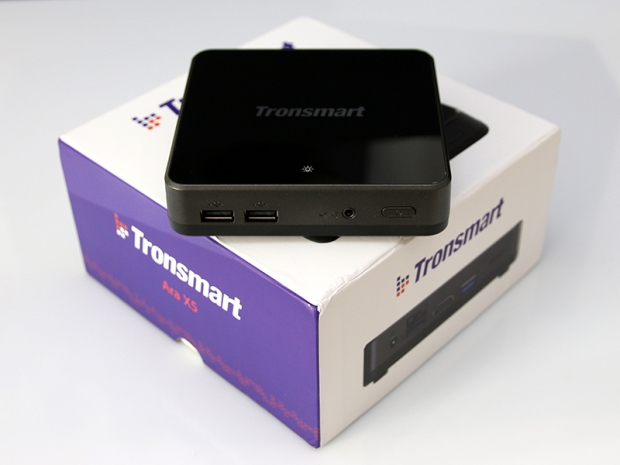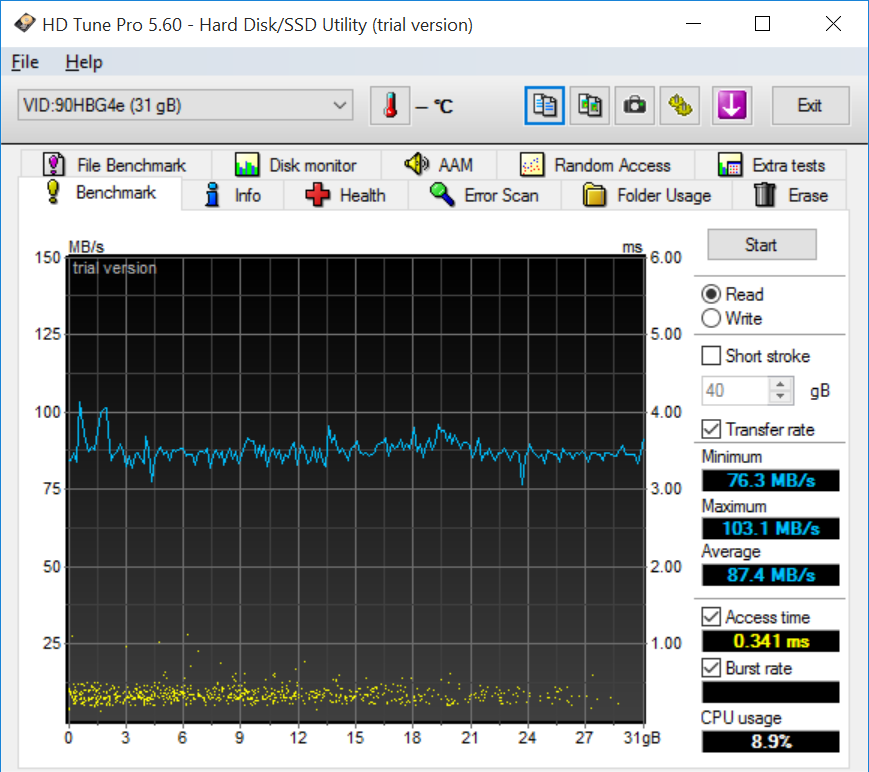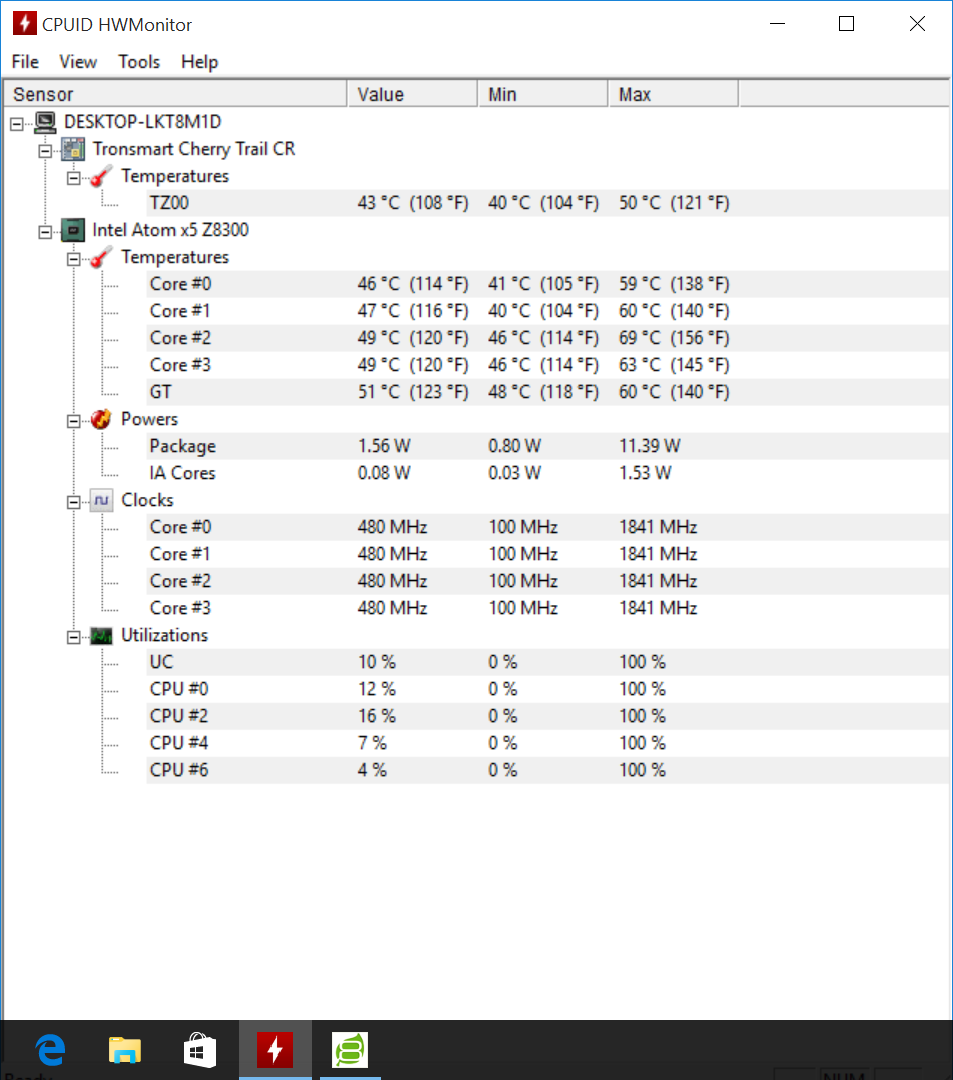Index
Tronsmart Ara X5 Specs and Performance
Cherry Trail is not exactly a revolutionary processor design. It’s a “tock” in Intel’s “tick-tock” model. The CPU portion of the SoC is basically a die shrink of Bay Trail, manufactured using the latest 14nm node. The Airmont architecture is just a slightly modified Silvermont architecture, but since it’s manufactured in a superior node, it should deliver better sustained performance and higher CPU utilisation.
However, the transition to 14nm also left Intel with a lot of die space to play around with, and the chipmaker put it to good use by sticking a more powerful GPU in the package. Whereas Bay Trail relied on Ivy Bridge (Gen7) graphics, Cherry Trail features a new Gen 8 GPU, based on the same architecture you would find in its Broadwell big-cores. This means you get 4K/h.265 video acceleration, along with DirectX 11.2 support. The GPU supports up to two displays.
Since the new process allowed Intel to cram more transistors on the same die area, the GPU was bumped up from 4 execution units (EUs) to 12 or 16 EUs, depending on the SKU. Atom x5 parts sport 12 EUs, while x7 processors have 16 EUs.
This particular SKU, the Atom x5-Z8300, features four CPU cores and 12 EUs. The CPU is clocked at 1.44GHz to 1.84GHz, while the GPU runs at 200MHz to 500MHz. Despite the spec bump, the 14nm node allowed Intel to keep thermals in check, and the official SDP is just 2W.
The chip has 2MB of cache and it’s capable of addressing 2GB of DDR3L-RS 1600 memory (single channel). This is perhaps the chip’s biggest limitation. While 2GB wasn’t a big deal on Bay Trail over the past two years, we would have liked to see a bit more from Intel’s new entry-level SoC. Luckily, the rest of the Cherry Trail line-up supports up to 8GB of dual-channel memory, so this is only an issue for the x5-Z8300.
Speaking of which, Intel’s recommended customer price for this particular SoC is just $20. While this may sound like a bargain for an x86 chip, bear in mind that Cherry Trail isn’t exactly competing against AMD. It has to take on ARM-based SoCs from Qualcomm, MediaTek and other chipmakers.
Before we move on to the performance, let’s list the specs.
Tronsmart Ara X5 Specifications:
- Processor: Intel Atom x5-Z8300 quad-core, 1.44GHz base, 1.84GHz Turbo, 14nm
- Graphics: Intel HD Graphics Gen8, 200MHz base, 500MHz burst
- RAM: 2GB DDR3L
- Storage: 32GB eMMC, expandable via microSD card up to 32GB
- Wireless: dual-band 802.11b/g/n, Bluetooth 4.0 (Broadcom AP6330)
- Dimensions: 115 x 120 x 27mm (4.65 x 4.47 x 1.06in)
- Weight: 211g
- Ports: 2 x USB 2.0, 1x USB 3.0, HDMI, 3.5mm audio, 100Mbps RJ45, DC in (5V 3A)
- OS: Windows 10
Now, if all the talk of more EUs and Intel’s bleeding-edge 14nm silicon has you all worked up, get ready to curb your expectations. Like we said, Airmont is just a Silvermont die-shrink with beefed up graphics. Furthermore, the 8300 is the entry-level Cherry Trail part, with relatively low clocks and single-channel memory support.
In spite of this, we pitted it against the Atom Z3736F, which is basically the fastest widely available Bay Trail chip. In other words, we are comparing the fastest Bay Trail to the slowest Cherry Trail part due to the fact that the first batch of Bay Trail parts was discontinued a while ago, but you can still pick up loads of products based on Z3736F and Z3735 silicon (and they tend to be very cheap).
While it’s a 22nm part, the Z3736F maxes out at 2.16GHz, almost 300MHz more than the new x5-Z8300. Its GPU also runs at somewhat higher clocks, but it’s based on an ancient architecture and has just 4 EUs.
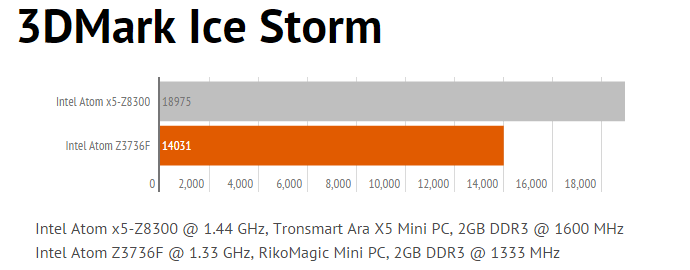
Long story short, even the entry-level Cherry Trail easily outpaces the Z3736F. In GPU tests, it ends up noticeably faster, plus it experiences less throttling. In 3DMark Ice Storm, it scores almost 19,000, ending up about 35% faster than the Z3736F.
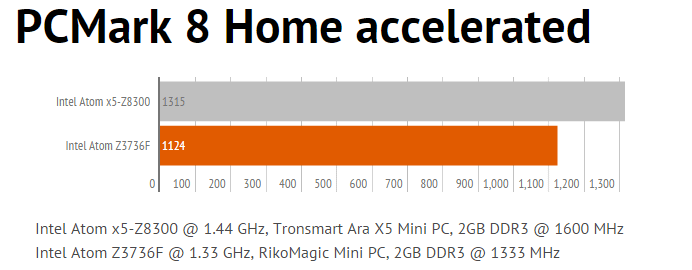
Despite the lower clock, the PCMark score is about 20% higher than on the Z3736F. The GPU also helps in video encoding and casual gaming tests. The biggest difference is evident in the Photo Editing v2 test, which the Cherry Trail system completes in just over a second, while the Bay Trail takes 2.65s.
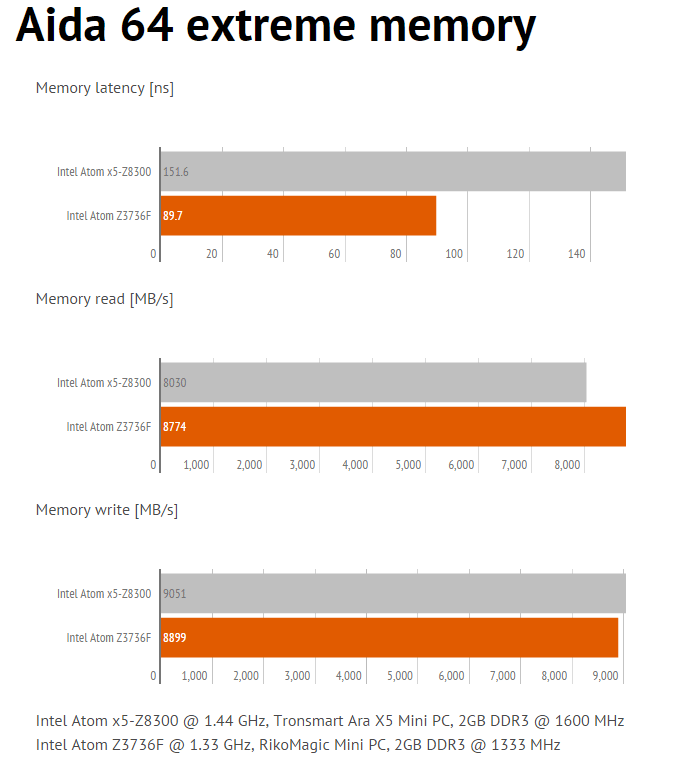
There is virtually no improvement on the memory front. In fact, in some cases, our Cherry Trail sample ended up slower than Z3736F systems we had a chance to test. However, it should be noted that this may be a vendor-specific score.
Speaking of which, we also tested the Ara X5’s storage and got average results. We’ve seen faster eMMC drives in some systems. On the other hand, we also encountered much slower storage on some units, so the Tronsmart gets a pass.
Sandra and Aida CPU tests favour Cherry Trail over Bay Trail, although the difference is not that big in some cases.
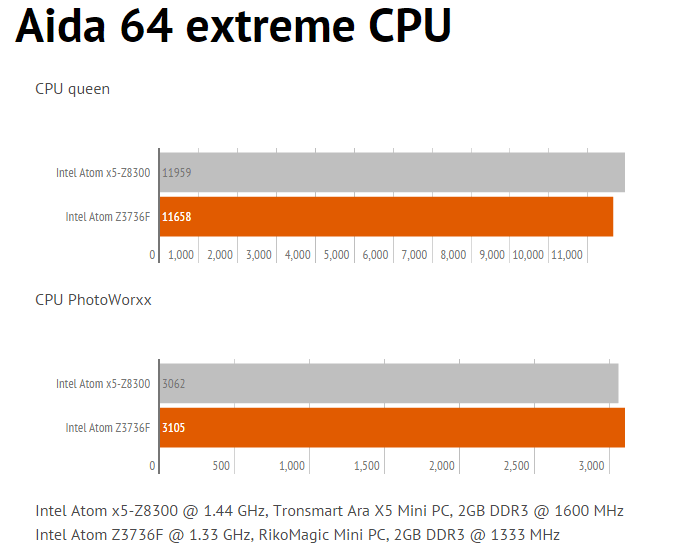
In fact, in the Aida PhotoWorxx test, the new SoC lags behind the Z3736F.
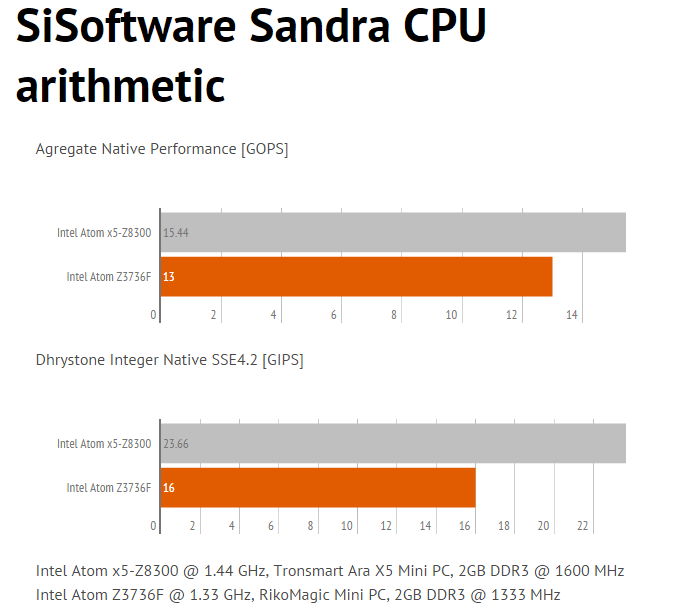
Sandra Arithmetic loves Intel's new silicon and the margin is pretty wide.
As far as thermals go, we were very pleased with the results. Cherry Trail is somewhat cooler than Bay Trail, especially if you’re not running GPU-bound applications (realistically, few people will push the GPU to the limits). The SDP stands at 2W, or 10% less than the Z3736F, but the biggest difference is in sustained performance. Cherry Trail can keep running at higher clocks for a bit longer, that’s the whole point.
Our unit reported a CPU temperature of 67 degrees Celsius after running a few benchmarks. There’s practically no throttling. This is obviously good news for anyone considering a Cherry Trail tablet or micro PC.

While Bay Trail still manages to keep up in terms of overall performance, it also runs out of steam much faster. That’s why many Bay Trail micro PCs, and even stick PCs, feature active cooling. It’s a lot easier to get away with passive cooling with Cherry Trail.

Although Tronsmart opted for a plastic-acrylic chassis, the acrylic plate at the bottom is relatively thick and appears to help spread the heat evenly.

